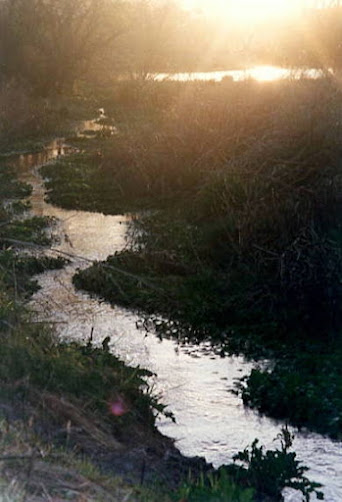Metamorphosis is not just for Monarchs
In late October, Coya loaned us a mesh enclosure containing one of her milkweed plants, which already had two Monarch caterpillars voraciously feeding on it. Later on, she brought over a third caterpillar to add to the party.
 | ||
| Newly-made chrysalis #1, with nearby caterpillar |
Each caterpillar was in a different phase of growth (called an instar) and the “eldest” one created its chrysalis on November 3rd. After 17 days inside, a beautiful butterfly emerged (called eclosion) on a sunny afternoon, and within a few hours took its first flight. Uno was able to keep watch over the whole process, and to capture his eyewitness experience with photos and videos. During that same 17 days, I was an eyewitness to a different kind of metamorphosis 1800 miles away, but no less dramatic: someone very dear to us emerging from a near-death health crisis with signs of a full recovery.
 |
| Wildflower meadow next to our Arivaca house, summer 2021 |
 |
| Waiting for "Dottie" to fly |
The second caterpillar created its chrysalis on November 5th and emerged from it 20 days later, after I had returned home to Arivaca and welcomed three family members visiting for the Thanksgiving holiday. This time, the butterfly waited to eclose until just after we all left to have dinner at the community center! And who could blame her for wanting peace and quiet for this incredible undertaking. I can only imagine how it feels to burst through and unfold from that tiny “sleeping bag”, then to stretch your wings and take to the sky. Thankfully, “Dottie” (as the kids named her) waited to take her first flight after we all got back to watch her practice walking and hopping around the top of the mesh enclosure.
 |
| Brand new chrysalis made by "Dottie" on Nov. 5th |
 | ||||
| On November 24th, "Dottie" was about to eclose |
 |
| "Dottie" next to her empty chrysalis on Nov. 25th |
Here's a cool video of "Dottie" getting used to her new wings
 |
| She loved the oceans too |
 |
| Tiger Swallowtail at Magnuson Children's Garden |
From its beginning in 2001, many of the plants throughout the Magnuson Children's Garden were selected by its Design Team because they attract and feed adult butterflies and/or caterpillars. As the years have passed, among the new features added are a butterfly-shaped Pollinator Garden on its west hillside, a large patch of Showy Milkweed along its northwest spiral path, and a 30ft long Pollinator Border that wraps around its nearby raised-bed food garden.
There are also Puddling Ponds to provide minerals and salts for adult butterflies, an easy and fun project for any garden. For instructions and photos on how to create one, visit my July 2020 post entitled "The Glorious Destruction of my Passion Vines".
The third caterpillar in the mesh enclosure created its chrysalis on November 12th and- perhaps because of the cooler weather- lingered there the longest. On December 3rd when it eclosed, both Uno and I were there to witness it together. I ran my camera for 15 minutes, which was too big of a file to be posted here, so the videos below are divided into her first 90 seconds and her following 90 seconds. I named her Diana because it was absolutely divine to be there for her first hours as a butterfly.
According to Iowa State University's website, here is what happens during a butterfly's eclosion: "The wings appear folded or crinkled and the butterfly must begin the
process of expanding and drying its wings before flight is possible.
Meconium is pumped into the venation structures of the wings by wing
movement and the help of gravity. Once the wings have fully expanded,
the meconium will be pumped back into the body of the butterfly. The
small amounts still in the veins of the wings will dry and harden giving
the wings a more sturdy structure that will allow flight. It can take
anywhere from 30 minutes to 2 hours for a butterfly’s wings to
completely dry, this is usually varied according to size. After the
wings have dried but before the butterfly will take its first flight it
will dispel the excess meconium from its body."
 |
| "Diana" spreads her wings |
Native wildflowers are probably already growing in or near your property, such as this Hairy Fournwort that sprung up during the summer monsoon season in our garden, and just look at how many butterflies are finding ample nourishment in the video below! We hope many more residents of Southern Arizona
will join us in this "Monarchs and More" gardening effort, resulting in a butterfly oasis in every community!
 |
| "Winged Wonder" on Aster in our front garden |
Additonal resources:
- Found a caterpillar that you'd like help to identify? Visit https://www.projectnoah.org/missions/11425307 for some great ID information.
- Found a butterfly that you'd like help identifying? Visit https://www.butterflyidentification.org/butterflies-by-state-listing.php?reach=Arizona
Photo and video credits: all by Emily Bishton
- Monarch butterfly on mesh enclosure
- Monarch caterpillar and chrysalis
- Wildflower meadow
- Waiting for "Dottie" to fly
- "Dottie" and her empty chrysalis
- "Dottie" testing her wings video
- Milda Bishton at the ocean
- Tiger Swallowtail
- "Diana's" eclosion video
- "Diana" spreading her wings
- Butterflies on Hairy Fournwort video
- Pearl Crescent butterfly on Aster flower



